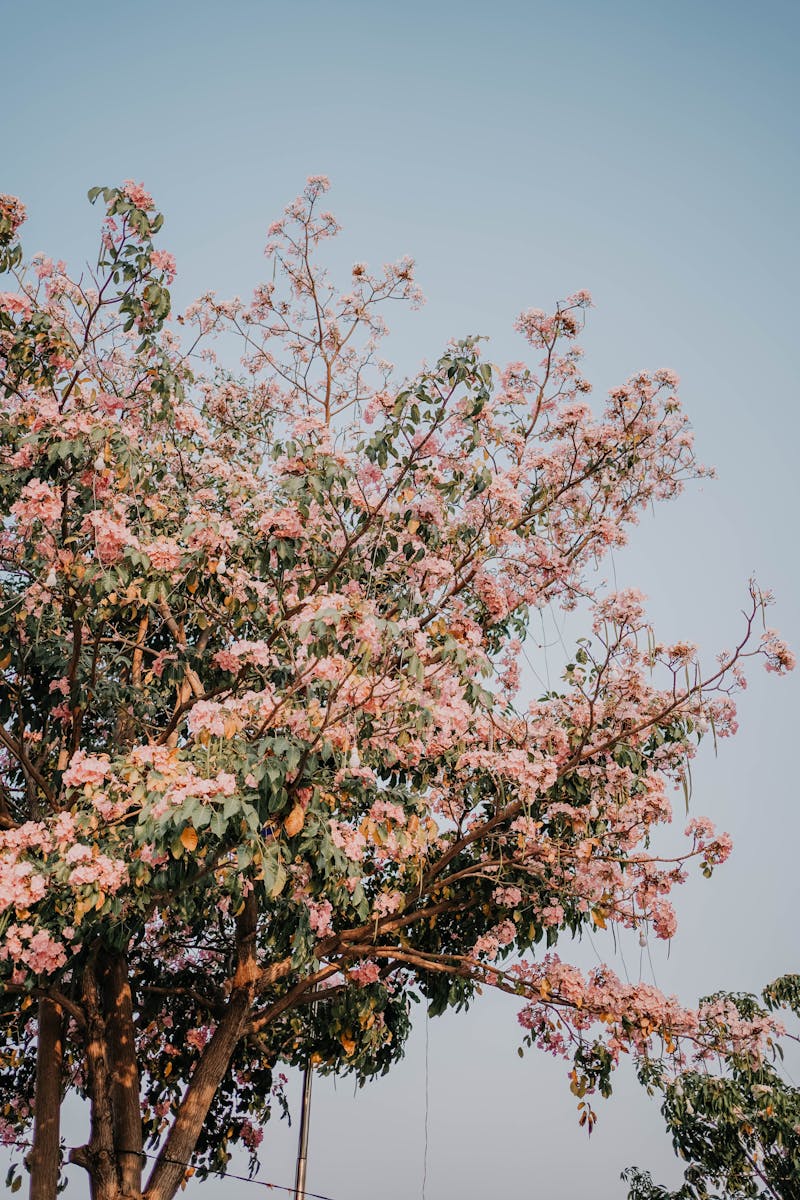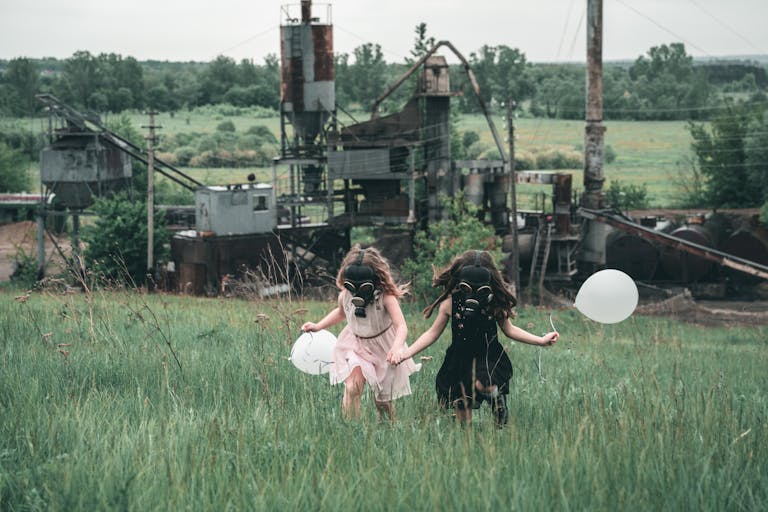Managing Seasonal Allergies: Stay Active Outside Without the Sneezes!
“You smell like allergies.”
That’s what my husband said after I came into the house. I had just finished trying to mow down a weedy back corner of our backyard.
Spring is one of my favorite times of the year. It is a season of growth and rejuvenation. *cue birds chirping scene from snow white*. Nature seems to wake up with flowers blossoming, the growth of seedlings, and the greenery all around. But for many families, mine included, spring also brings a host of allergy symptoms that can dampen even the most cheerful spring day.
With the right strategies for yourself and your family, you can balance and manage seasonal allergies while still enjoying spring outdoors.
Impact of Spring on Seasonal Allergies
What causes seasonal allergies? Development of allergies is usually due to an immune reaction to an allergen. The type of allergen that someone responds to will vary by individual and by time of the year.
This can result in symptoms such as itchy watery eyes, sneezing, congestion, cough, hives and other rashes. If it is severe, it can even lead to anaphylaxis, wheezing, and shortness of breath. For some, they are also affected by other atopic diseases including asthma and eczema that can flare up during when seasons change.
According to the American Academy of Allergy and Immunology, throughout most of the United States, spring allergies begin in February and last until early summer, around May. Summer allergies start around late May and last until June. Fall allergies start around August and last until November.
The common types of allergens based on the seasons are as follows:
- Spring → tree pollen
- Summer → grass pollination
- Fall → ragweed pollination
There are more allergy types than that but those are the most common. If allergy symptoms are happening year round or indoors, other things to look into are dust, animal dander, roaches, and mold to name a few.
Useful pollen trackers like those below can be helpful to determine what the pollen forecast in your area is.
According to 2021 data from CDC’s National Center for Health Statistics, 1 in 3 US adults and more than 1 in 4 US children report having a seasonal allergy, eczema, or food allergy.
Additionally, the percentage of children with seasonal allergies also varies by sex, age, race, and Hispanic origin based on the National Health Interview Survey of the same year.
- Boys (20.0%) were more likely to have a seasonal allergy than girls (17.7%)
- Children aged 0–5 years (10.4%) were less likely to have a seasonal allergy than children aged 6–11 (21.3%) or 12–17 (24.2%).
- Non-Hispanic Black (21.3%) and non-Hispanic White (20.4%) children were more likely to have a seasonal allergy than Hispanic (15.3%) and non-Hispanic Asian (11.0%) children.
- Hispanic children were more likely to have a seasonal allergy than non-Hispanic Asian children.
That’s a whole lot of kids and a whole lot of adults.
Then, the time of the day and weather can also determine the amount of pollen in the air. Generally speaking, pollen counts are higher during the late morning to early evening hours. Rainy days can help lower pollen counts by keeping pollen particles heavier and out of the air. Dry, windy days can increase pollen counts.
A Changing Climate and Allergies
A changing warming climate also means longer growing seasons in some places and thus longer allergy seasons are also longer. And, did you know that higher carbon dioxide also increases pollen levels and pollen potency, making allergy seasons more intense year after year.
Just know that with so many allergy sufferers, you are not alone.
Managing Allergy Symptoms
Having allergy symptoms does not have to keep you indoors. With proper planning, preparation, and partnership with your own doctor, you can come up with a plan and have the resources to keep symptoms at bay – allowing you and your family to still enjoy time in nature.
Some ways to manage allergy symptoms include controlling exposure to the allergens and washing it away when you are exposed. These include:
- Nasal saline rinses using distilled, boiled, or appropriately filtered water
- Showering and washing your face and hair before bedtime and after spending time outdoors
- Washing pillow cases, beddings, and blankets regularly
If none of these work and you’re still struggling with puffy itchy eyes or are stuffed up, it’s time to talk to your doctor and maybe even see an allergist.
Other ways to manage allergy symptoms can include over the counter and prescription medications. Typical over the counter options include non drowsy oral antihistamines, nasal corticosteroids sprays, and allergy eye drops. The type and dose for younger kids will vary. To prepare for changes in seasons, talk to your doctor to ensure that you have the right medications on hand for yourself and your little ones.
If your child has some combination of the other atopic diseases like asthma and eczema, it is important to talk to their doctor to be sure that your child is managed with the right inhalers and skin care regimen to make them feel comfortable throughout the season.
Enjoying the Outdoors During Allergy Season
Because time in nature has so many benefits for physical, mental, and emotional health for busy parents and for growing brains, it is still important to get outside. It may seem like outdoor allergies want to keep you inside but even small moments matter.
Strategies for your family to enjoy the outdoors and minimize allergen exposures:
- Going outside at a time of day with lower pollen counts – typically early morning and early evening.
- Having medications on hand wherever you go – especially life saving ones like inhalers and epi-pens.
- Choosing destinations where there might be less of what you are allergic to. This could be lakes or beaches instead of woodlands and forests or shady trails instead of open fields.
- Gear up. Wear protective clothing like sunglasses, hats, and maybe even bandanas or lightweight masks to help minimize exposure.
- Clean up. Wash up or change quickly after outdoor activities to minimize bringing allergens into your car or home.
By using one of these strategies, getting outdoors is still doable and fun while keeping symptoms in check.
Creating an Allergy Friendly Home
Lastly, creating an allergy friendly home can also be important to ensure that your symptoms don’t keep you up at night. These include:
- Keeping windows and doors shut during peak allergy season to keep out pollen
- Having air purifiers in the home, making sure to change filters regularly
- Regular dusting, mopping, and vacuuming
- Regular maintenance on your home HVAC systems
- Minimize carpet
These helpful home tips will be helpful not just during spring season but year round and if indoor allergies is something that your family struggles with, it’ll be even more crucial.
Final Thoughts
Having allergies does not have to mean missing out on the beauty of spring. With some planning, preparation, and some small tweaks, your family can still enjoy time outdoors while staying comfortable.
Plus, once you’re out there, you’ll just want to keep on going. Nature is still worth it!

Remember: This post is for informational purposes only and may not be the best fit for you and your personal situation. It shall not be construed as medical advice. The information and education provided here is not intended or implied to supplement or replace professional medical treatment, advice, and/or diagnosis. Always check with your own physician or medical professional before trying or implementing any information read here.



